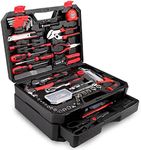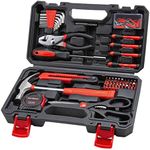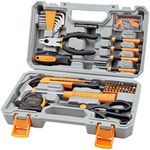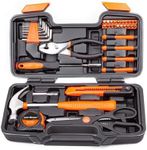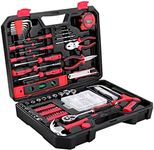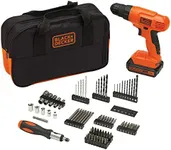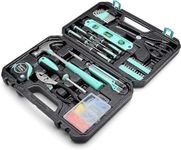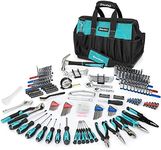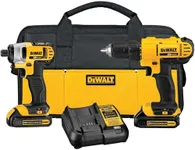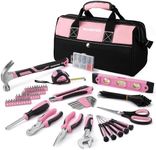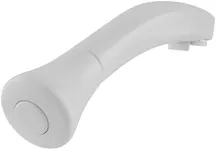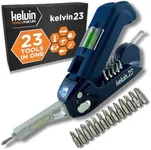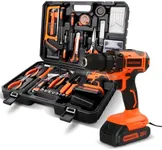Buying Guide for the Best Household Tool Kits
Choosing the right household tool kit can make a big difference in how efficiently and effectively you can handle various tasks around your home. Whether you're assembling furniture, fixing a leaky faucet, or hanging pictures, having the right tools on hand is essential. When selecting a tool kit, consider the types of tasks you typically perform and the quality and variety of tools included. Here are some key specifications to help you make an informed decision.Tool VarietyTool variety refers to the range of different tools included in the kit. This is important because a wider variety of tools can handle a broader range of tasks. Basic kits might include essentials like screwdrivers, pliers, and a hammer, while more comprehensive kits could have wrenches, a tape measure, a utility knife, and more. If you only need tools for simple tasks, a basic kit will suffice. However, if you anticipate needing to tackle a variety of projects, opt for a kit with a more extensive selection.
Tool QualityTool quality is about the durability and performance of the tools. High-quality tools are made from robust materials and are designed to last longer and perform better. This is important because better quality tools can withstand more wear and tear and are less likely to break or fail during use. Look for tools made from materials like chrome vanadium steel or high-carbon steel. If you plan to use the tools frequently or for heavy-duty tasks, investing in higher quality tools is advisable. For occasional use, mid-range quality tools may be sufficient.
Storage CaseThe storage case is the container that holds all the tools in the kit. A good storage case is important for keeping your tools organized and easily accessible. It also protects the tools from damage and makes it easier to transport them. Cases can range from simple plastic boxes to more durable and organized cases with specific slots for each tool. If you need to carry your tools around frequently or want to keep them well-organized, look for a kit with a sturdy and well-designed case. For home use where the kit will mostly stay in one place, a simpler case may be adequate.
Number of PiecesThe number of pieces in a tool kit refers to the total count of individual tools and accessories included. This is important because a higher number of pieces generally means more versatility and the ability to handle a wider range of tasks. Kits can range from small sets with just a few essential tools to large sets with over a hundred pieces. If you only need tools for basic repairs and maintenance, a smaller kit with around 20-30 pieces should be enough. For more complex projects or if you want to be prepared for any situation, consider a larger kit with 50 or more pieces.
ErgonomicsErgonomics refers to how comfortable and easy the tools are to use. This is important because tools that are comfortable to hold and use can reduce hand fatigue and make tasks easier to complete. Look for tools with features like cushioned grips, balanced weight, and non-slip handles. If you plan to use the tools for extended periods or have any hand or wrist issues, prioritizing ergonomic design is crucial. For occasional use, ergonomics may be less of a concern, but it's still worth considering for overall ease of use.
